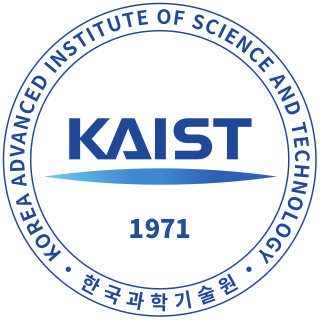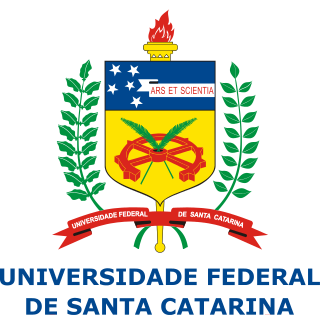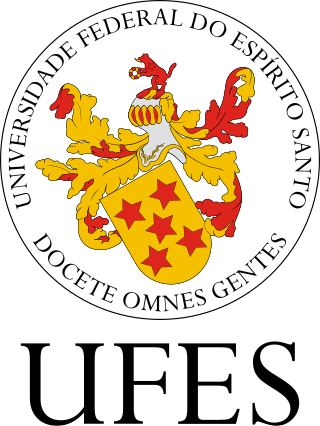QS Ranking
New Rankings of Universities have been published by QS World University Rankings 2024. [1] (apply filter by location "Latin America")
Rankings of universities in Latin America have been published by Quacquarelli Symonds, SCImago and Webometrics.
New Rankings of Universities have been published by QS World University Rankings 2024. [1] (apply filter by location "Latin America")
Rankings of institutions in Latin America have been published by SCImago for the year 2016. [2] [3]
Rankings of universities including those in Latin America have been published by Times Higher Education Rankings 2018 [4]

The Korea Advanced Institute of Science and Technology (KAIST) is a national research university located in Daedeok Innopolis, Daejeon, South Korea. KAIST was established by the Korean government in 1971 as the nation's first public, research-oriented science and engineering institution. KAIST is considered to be one of the most prestigious universities in the nation. KAIST has been internationally accredited in business education, and hosts the Secretariat of the Association of Asia-Pacific Business Schools (AAPBS). KAIST has 10,504 full-time students and 1,342 faculty researchers and had a total budget of US$765 million in 2013, of which US$459 million was from research contracts.

The Group of Eight (Go8) comprises Australia's most research intensive universities - the University of Adelaide, the Australian National University, the University of Melbourne, Monash University, the University of New South Wales, the University of Queensland, the University of Sydney and the University of Western Australia. It is often compared to the Russell Group of pioneering research universities in the United Kingdom.
College and university rankings order higher education institutions based on various criteria, with factors differing depending on the specific ranking system. These rankings can be conducted at the national or international level, assessing institutions within a single country, within a specific geographical region, or worldwide. Rankings are typically conducted by magazines, newspapers, websites, governments, or academics.
Three national rankings of universities in the United Kingdom are published annually, by The Complete University Guide, The Guardian and jointly by The Times and The Sunday Times. Rankings have also been produced in the past by The Daily Telegraph and Financial Times. UK Universities also rank highly in global university rankings with 8 UK Universities ranking in the top 100 of all three major global rankings as of 2023/24: QS World University Rankings, Times Higher Education World University Rankings and Academic Ranking of World Universities.

The Academic Ranking of World Universities (ARWU), also known as the Shanghai Ranking, is one of the annual publications of world university rankings. The league table was originally compiled and issued by Shanghai Jiao Tong University in 2003, making it the first global university ranking with multifarious indicators.

A research university or a research-intensive university is a university that is committed to research as a central part of its mission. They are "the key sites of knowledge production", along with "intergenerational knowledge transfer and the certification of new knowledge" through the awarding of doctoral degrees, and continue to be "the very center of scientific productivity". They can be public or private, and often have well-known brand names.

Pohang University of Science and Technology (POSTECH) is a private research university in Pohang, South Korea.

The Federal University of Santa Catarina is a public university in Florianópolis, the capital city of Santa Catarina in southern Brazil.
Quacquarelli Symonds (QS) is a higher education analyst and a for-profit services provider headquartered in London with offices in Europe, Asia, and the Americas.

The University of Palermo is a private university in Buenos Aires, Argentina. It has several buildings located in different parts of the city. The university offers several educational programs, including a double degree in Management awarded along with the London School of Economics. It has ties with the universities of Yale, Harvard and NYU among others and it is regarded as one of the best private universities in Argentina, constantly ranking in the top 5.

The Times Higher Education World University Rankings, often referred to as the THE Rankings, is the annual publication of university rankings by the Times Higher Education magazine. The publisher had collaborated with Quacquarelli Symonds (QS) to publish the joint THE-QS World University Rankings from 2004 to 2009 before it turned to Thomson Reuters for a new ranking system from 2010 to 2013. In 2014, the magazine signed an agreement with Elsevier to provide it with the data used in compiling its annual rankings.
The QS World University Rankings is a portfolio of comparative college and university rankings compiled by Quacquarelli Symonds, a higher education analytics firm. Its first and earliest edition was published in collaboration with Times Higher Education (THE) magazine as Times Higher Education–QS World University Rankings, inaugurated in 2004 to provide an independent source of comparative data about university performance. In 2009, the two organizations parted ways to produce independent university rankings, the QS World University Rankings and THE World University Rankings.

Hierarchical lists that rank universities are regularly published by the popular press.These different tables attempt to fulfill a demand for information and transparency. However, rankings influence students' choices and distort higher education policies. List producers allow well remunerated vice-chancellors to claim a top spot for their university in an educational league. These ranking, the publishers claim, are determined by quantitative indicators. Published research suggests otherwise, rankings are re-shaping public education and harming the academic project. According to an Independent Expert Group (IEG), convened by the United Nations University International Institute for Global Health, Global university rankings are
The Faculty of Arts and Humanities is one of the 11 constituent faculties of University College London (UCL). The current Executive Dean is Professor Stella Bruzzi, FBA.

The Federal University of Espírito Santo is a federal university with headquarters in the city of Vitória, capital of Espírito Santo state, in Brazil.
The University Ranking by Academic Performance (URAP) is a university ranking developed by the Informatics Institute of Middle East Technical University. Since 2010, it has been publishing annual national and global college and university rankings for top 2000 institutions. The scientometrics measurement of URAP is based on data obtained from the Institute for Scientific Information via Web of Science and inCites. For global rankings, URAP employs indicators of research performance including the number of articles, citation, total documents, article impact total, citation impact total, and international collaboration. In addition to global rankings, URAP publishes regional rankings for universities in Turkey using additional indicators such as the number of students and faculty members obtained from Center of Measuring, Selection and Placement ÖSYM.
Universities in Malaysia are ranked in a number of ways, including both national and international ranks.
This article presents an overview of university rankings in Pakistan. Within Pakistan, the Higher Education Commission (HEC) provides official rankings of higher education institutions (HEIs) nationally, based on a multitude of criteria. There are also various magazines, newspapers and international agencies/standards which provide rankings and analysis.
Rankings of universities in Southeast Asia have been published by QS World University Rankings, Times Higher Education and others.
As of 2020, China had the world's second-highest number of top universities in several most cited international rankings including the Academic Ranking of World Universities (ARWU), the U.S. News & World Report Best Global University Ranking, the Center for World University Rankings (CWUR), the Performance Ranking of Scientific Papers for World Universities and the Three University Missions Ranking.